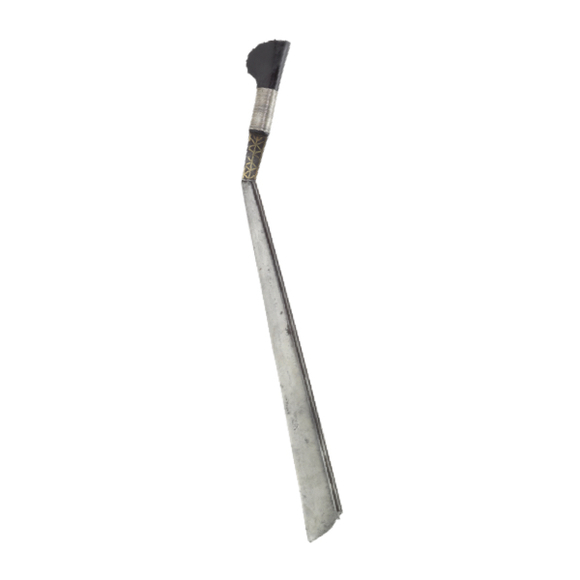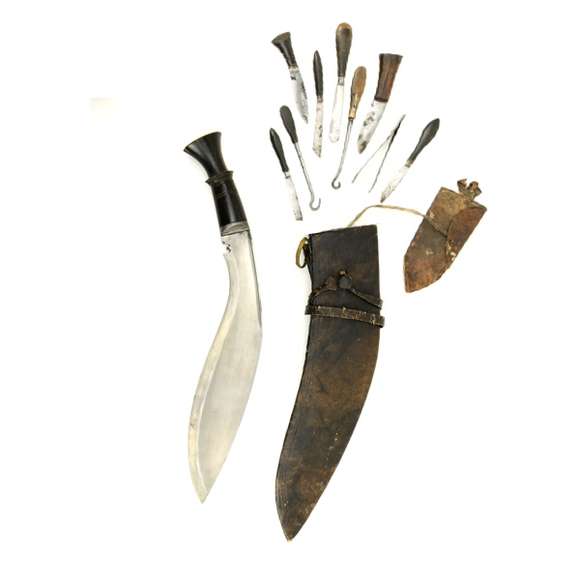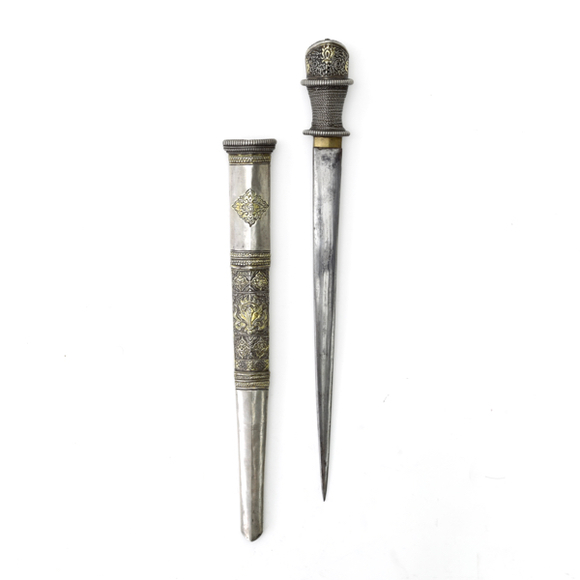Language: Malay / Kayan
Source: Period sources
Description
Parang ilang was the most widely used name for what we today know as the mandau. The headhunter's sword of Borneo that is strongly associated with the Dayak people.1
Parang literally means sword. Ilang is described in Kayan as: "the special shape of the Kayan sword, curved cutting edge, slightly convexed blade, and hollow ground". 2
Parang Ilang was mostly used among the Bidayuh, Iban (Sea Dayak) and Penan.
Duku was also used by the Iban. Duku apang was synonymous to parang ilang, the decorated Kayan sword.3
Malat by the Kayan. (Malat aru ilang for the long sword.) 4
Baieng by the Kenyah.
Bandau by Lun Bawang
Pelepet/Felepet by Lundayeh.
For the main article, see: Mandau.

A fine parang ilang, or mandau.
Listed at Mandarin Mansion in 2020.
Notes
1. For mention of parang ilang see among others Ivor Hugh Norman Evans; Among primitive peoples in Borneo; a description of the lives, habits & customs of the piratical head-hunters of North Borneo, with an account of interesting objects of prehistoric antiquity discovered in the island. Seeley, Service & Co Limited, London 1922. Page 292.
2. C. Hudson Southwell; Kayan English Dictionary. Sarawak Literary Society. Kuala Lumpur, 1990. Page 50.
3. Anthony Richards; An Iban-English Dictionary. Clarendon Press. Oxford. 1981. Page 15.
4. C. Hudson Southwell; Kayan English Dictionary.






